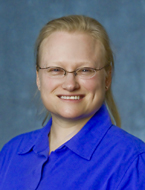Unexpected structural features of the hepatitis C virus envelope protein 2 ectodomain Journal Article
Local Library Link: Find It @ Loyola
| Authors: | Sabahi, A.; Uprichard, S. L.; Wimley, W. C.; Dash, S.; Garry, R. F. |
| Article Title: | Unexpected structural features of the hepatitis C virus envelope protein 2 ectodomain |
| Abstract: | Hepatitis C virus (HCV), a member of the family Flaviviridae, is a leading cause of chronic liver disease and cancer. Recent advances in HCV therapeutics have resulted in improved cure rates, but an HCV vaccine is not available and is urgently needed to control the global pandemic. Vaccine development has been hampered by the lack of high-resolution structural information for the two HCV envelope glycoproteins, E1 and E2. Recently, Kong and coworkers (Science 342:1090-1094, 2013, doi:10.1126/science.1243876) and Khan and coworkers (Nature 509[7500]:381-384, 2014, doi:10.1038/nature13117) independently determined the structure of the HCV E2 ectodomain core with some unexpected and informative results. The HCV E2 ectodomain core features a globular architecture with antiparallel beta-sheets forming a central beta sandwich. The residues comprising the epitopes of several neutralizing and nonneutralizing human monoclonal antibodies were also determined, which is an essential step toward obtaining a fine map of the human humoral response to HCV. Also clarified were the regions of E2 that directly bind CD81, an important HCV cellular receptor. While it has been widely assumed that HCV E2 is a class II viral fusion protein (VFP), the newly determined structure suggests that the HCV E2 ectodomain shares structural and functional similarities only with domain III of class II VFPs. The new structural determinations suggest that the HCV glycoproteins use a different mechanism than that used by class II fusion proteins for cell fusion. |
| Journal Title: | Journal of virology |
| Volume: | 88 |
| Issue: | 18 |
| ISSN: | 1098-5514; 0022-538X |
| Publisher: | American Society for Microbiology. All Rights Reserved |
| Journal Place: | United States |
| Date Published: | 2014 |
| Start Page: | 10280 |
| End Page: | 10288 |
| Language: | eng |
| DOI/URL: | |
| Notes: | LR: 20150303; CI: Copyright (c) 2014; GR: DK070551/DK/NIDDK NIH HHS/United States; GR: R21AI092073/AI/NIAID NIH HHS/United States; GR: R21AI097809/AI/NIAID NIH HHS/United States; GR: R41AI068230/AI/NIAID NIH HHS/United States; GR: R56 AI64617/AI/NIAID NIH HHS/United States; GR: UC1AI067188/AI/NIAID NIH HHS/United States; JID: 0113724; 0 (Receptors, Virus); 0 (Viral Envelope Proteins); 157184-61-7 (glycoprotein E2, Hepatitis C virus); OID: NLM: PMC4178838; 2014/07/02 [aheadofprint]; ppublish |
LUC Authors
-
 45
45Uprichard
Related LUC Article
